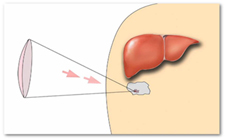Innovative Medical Procedures| Surgery & New Technologies
New Medical Procedures as innovative surgery carried out with the support and development of new medical technologies for improving surgical outcomes are more and more important to healthcare today.Biomedical equipment technologies are use variety of techniques to operate with less injury to the body than with open surgery, utilization of high technology in medical care.
The objective is always working toward better surgeries that are less invasive aimed at increasing the capabilities and decision-making resources of the surgeon while continuing to decrease the invasiveness of surgical therapies.
Non-invasive surgery is any surgical procedure that does not require penetration into the body through a cut or piercing the skin, body cavity. Without making an incision in the skin at all, the procedure is nonsurgical and does not involve tools or equipment that cut the skin or that physically enter the body.
Various medical pathologies can be treating with different methods of non-invasive surgery. One of the last methods “Knife Free” to treat cancer and various neoplasia for example is combines a high intensity focused ultrasound beams that heats and destroys targeted tissue (ablation). Click here for more information.
Minimally invasive procedures are performed through tiny incisions in the skin as opposed to a large opening. Some specially designed surgical tools, equipments and devices, are inserted through the incision to perform the required tasks. Sometimes a small camera is also inserted into the hole so the surgeon can see what to do.
New approach with this procedure is becoming more and more common in hospitals.
The key benefits of this method are manifold. Here are some of them:
- Outcome treatments
- Minimal discomfort and trauma
- Less post-operative pain
- No post operative complications
- Anesthesia is not required in most of this procedure
- Very quick back to normal life
- Fewer scars
Non-invasive Diagnostic Procedures | Medical Imaging Techniques
Non-invasive diagnostic imaging techniques is the basis for the Medical Imaging, the processes used to create images of the body and include:Ultrasound, Tomography, Thermography and Magnetic Resonance imaging.
Advantages and improvements of non-invasive diagnostic medicine are very important as they reduce the need for invasive surgery.
# Ultrasound - technique that uses high-pitched (ultra) sound waves projected onto tissues under examination. To the principle the issue of echo, the waves reflected captured and recorded electronically as images that we can see and analyze.
# Tomography - technique that uses X-rays to produce images of bones and joints. One of the latest developments in this technology is the PET that provides information of a physiological type and is able to detect alterations in the molecular biological level.
Moreover, this technology is also applies in diagnostic equipment type CT (computed tomography). Method that allows the play sections or layers body of the patient and make three-dimensional processing, acquiring many radiographic views of the same object at different angles is possible to reconstruct the object in its third dimension. For the production of images requires the intervention of a data processor (computer).
# Thermography - all objects at a temperature above absolute zero emit radiation in the infrared range. The principle of operation of the thermography based on progressing this phenomenon. The collection of data through the measurement of irradiation of the beam of infrared light, allows the two-dimensional display, Digital Imaging, Thermal Infrared (DITI). In the medical fields using the shape of the contact thermography, which based on using liquid crystal detectors. The mainly used today is in the diagnosis field of breast cancer called breast thermography.
# Magnetic resonance imaging (MRI) - technique for body scanning. Living tissues emit their special electromagnetic signals according to the content of the water in the tissue. If the tissue is subjected to a large external magnetic field, the small electromagnetic signals can be detected. "Assembling" this information and data, we can have a 3D image of the organism to diagnose.
Non-Invasive Surgical Oncological Procedure to Treat Tumors
Noninvasive surgical oncological procedure, advanced treatment option such as ultrasound therapy – HIFU. Specific High Intensity Focused Ultrasound to guide the delivery of treatments directly to the tumors. Technology, medical system, used focused sound waves to destroy the diseased tissues without causing collateral damage to surrounding healthy tissues. Click here for more information.
Non-invasive Therapy | Shockwaves Therapy
Non invasive surgical procedure advanced treatment option such as Extracorporeal Shock Wave Therapy. Non invasive surgical procedure uses sound waves to stimulate healing in some physical disorders. Dedicated medical device involves the conversion of a sound wave into a shock wave that applied repeatedly to a specific area of the body, target point, called Trigger point.Click here for more information.

Innovative Medical Device and Equipment
Health is a primary asset. The quality of health services is described based on size as:- Effectiveness - ability to produce the expected benefits
- Safety - no risk associated with their delivery
- Ethics - moral values current alignment of the company
- Efficiency - the ability to optimize the ratio between product and financial sacrifice incurred to produce it
- Accessibility - ease with which you can use them
- Continuity - coordination between the various operators to be involved in their delivery.
An example: a fully functional Physician Workstation, new standard for medical procedures. Versatile, operating table performed with modern built in advanced medical imaging technology to improve patient care by allowing Physicians to detect and characterize the abnormalities in the earliest possible stages.
Click here for more information.
AGADA' Medical Technologies | Deal clinical cases with multidisciplinary technological resources
Conditions and terms of use: The contents of our website have been carefully examined. Nevertheless, we assume no responsibility for the accuracy, completeness and timeliness of content.




